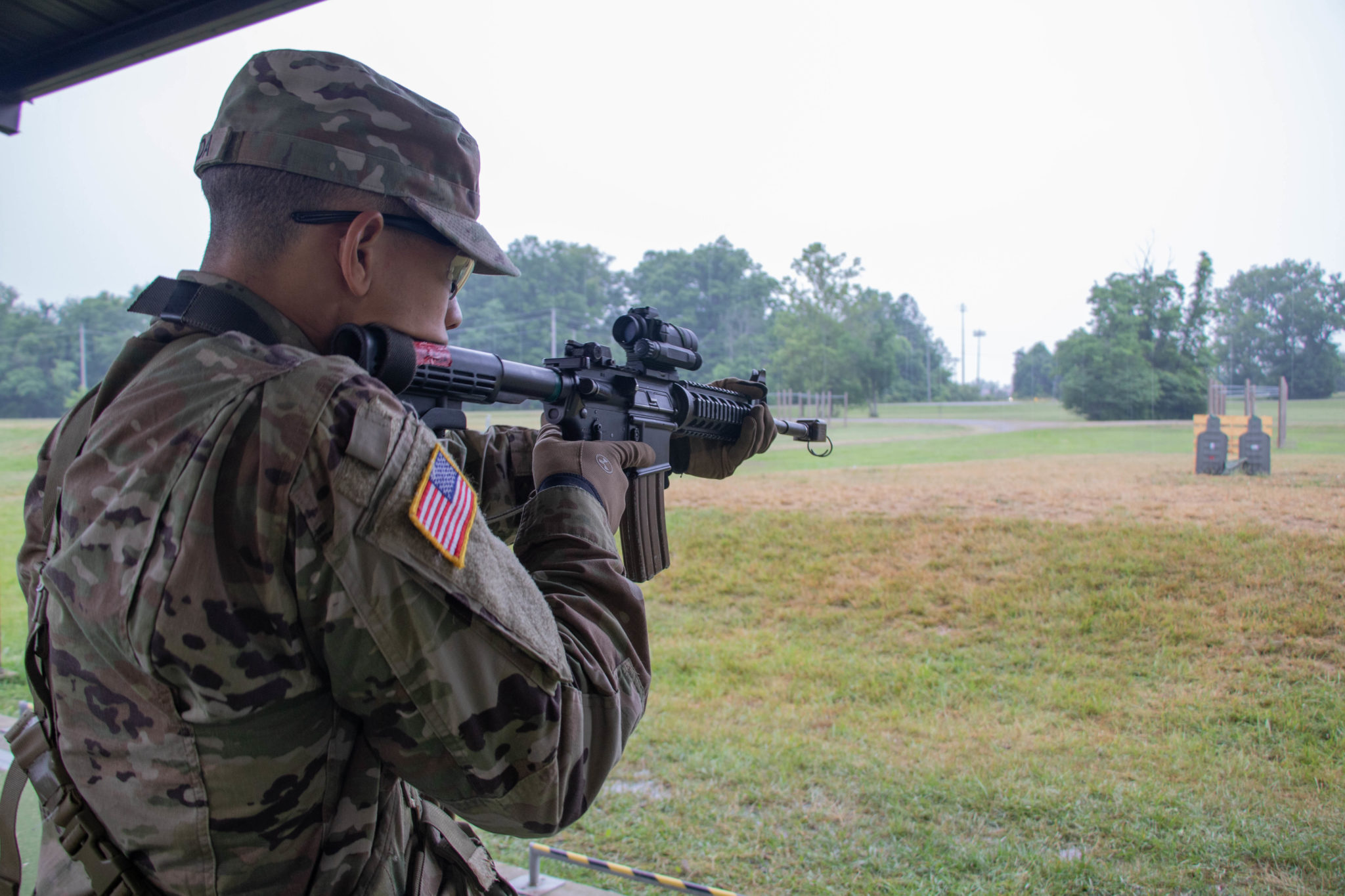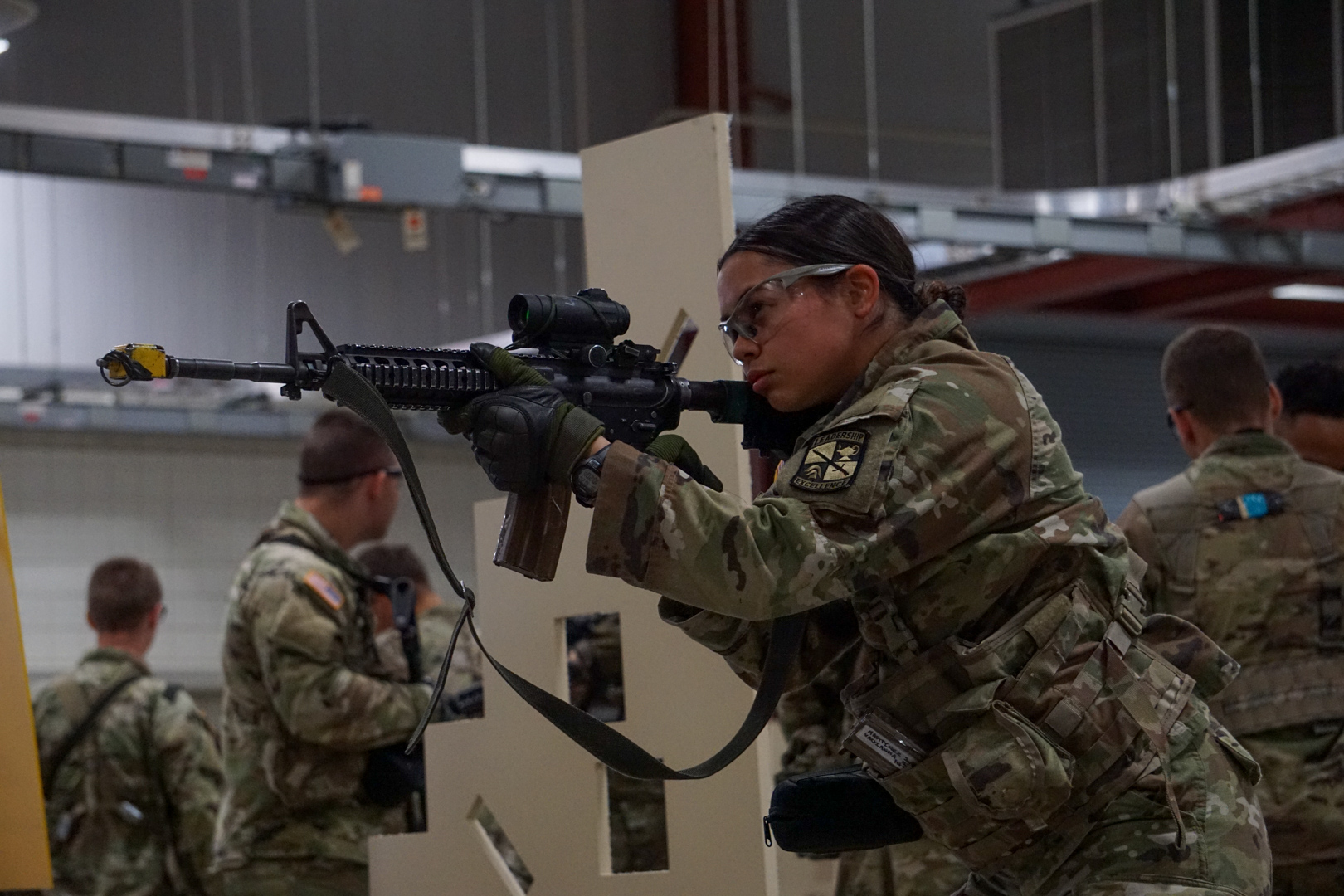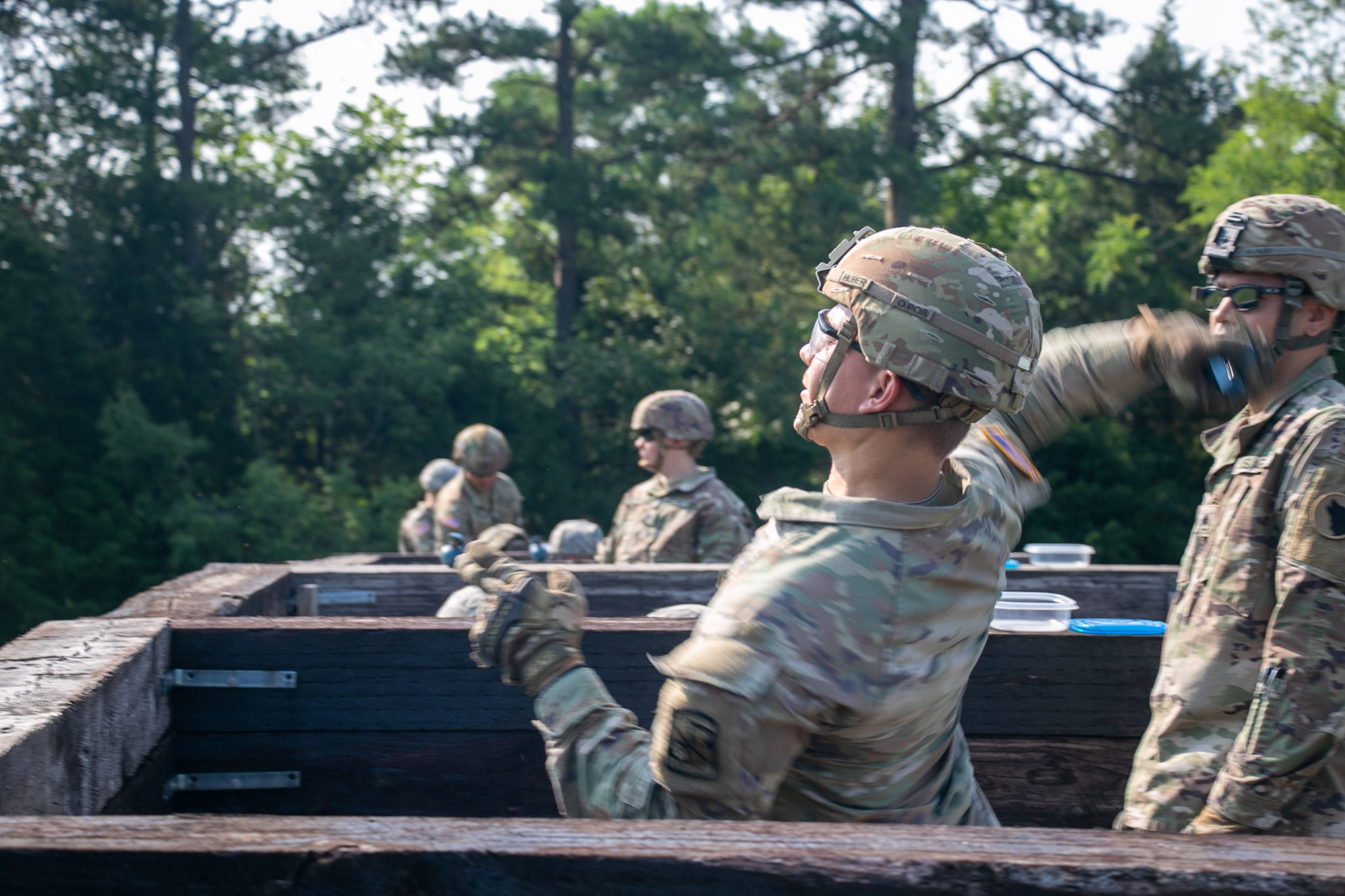By: Madison Thompson
FORT KNOX, Ky. – 8th Regiment, Advanced Camp, was educated and tested on Call For Fire techniques, July 13, at Fort Knox during Cadet Summer Training. Some of the learning objectives for CFF training include: describe and learn the call for fire format, execute virtual call for fire mission, report battle damage assessment.
Cadets learned the six elements involved in CFF which include: observer identification, warning order, target location, target description, method of engagement, method of fire and control.

8th Regiment, Advanced Camp study and perform Call For Fire training, July 13, during Cadet Summer Training at Fort Knox, Ky. Photo by: Madison Thompson
“They get a basic PowerPoint on the format for call for fire, how to make corrections, and then they’ll start with practical exercises. Each Cadet will get the chance to practice doing a full Call For Fire transmission,” explained 2nd Lt. Timothy Coll, a Field Artillery Officer who graduated from West Point. “What we’re trying to get down is making sure that every Cadet knows the basic Call For Fire format, how to call out the transmissions and how to make corrections and see if the round is on the target.”
There are crucial steps Cadets must follow in order to pass the training and their test.
“It includes identifying yourself, identifying your target, giving a location for that target, describing that target and some communications between the observer and what’s called a fire direction center, which is people who are shooting rounds from an artillery battery at that time,” said Cadet Alexander Nocella, University of New Mexico, Ruidoso, N.M.
Certain situations will require CFF training in Cadets futures as officers of the U.S. Army.
“Whenever an enemy is out of line for a direct fire or it’s larger than your weapons capabilities and you need to call for larger weaponry,” said Cadet Tristan Ratcliffe, University of Tennessee-Knoxville, Mureesboro, Tenn. Ratcliffe also complemented the style of teaching from the Cadre. “They’re doing great. They’re moving at the pace that the class needs to make sure everyone understands, offering as much assistance as necessary.”
Even with assistance, some of the concepts are still challenging for some Cadets.

8th Regiment, Advanced Camp study and perform Call For Fire training, July 13, during Cadet Summer Training at Fort Knox, Ky. Photo by: Madison Thompson
“Probably the calculations. It’s not that they’re extremely difficult. It’s just that you have to pay attention to where the rounds hit,” said Cadet Garrett Ford, University of Oklahoma, Muskogee, Okla. “That way, you can have accurate follow on calculations to successfully destroy your target.”
CFF, as Cadre and Cadets recognize, is an important skill to possess.
“Call For Fire is really important, no matter who you are. So, even if you’re field artillery, knowing the basic Call For Fire training is really important because could save your life someday,” said Coll. “You never know when you’re going to be in a situation, no matter what branch you are or who you are, and you’re going to need to get on the radio and call for fire to get yourself out of a sticky situation.”
“As future officers in the Army, we need to have a wide range of skills,” said Nocella. “This is an important one because, as platoon leaders, we need to be able to identify targets and be able to call in indirect fire in case we’re ever out there in a situation where we might engage an enemy that is out of direct fire range in order to protect our element.”
Cadet Summer Training brings 8,200 Cadets through Basic and Advanced Camp this summer on Fort Knox. These camps are designed to help challenge, grow and improve various skills and leadership qualities within the Cadets. If you think you have what it takes to be a Cadet or if you are interested in a job after college click the following link: https://my.goarmy.com/info/rotc1/index.jsp?iom=IP08-AUTO-R1NA-BR-XXX-XX-XXX-MO-XX-X-BRCMAC:IP08




